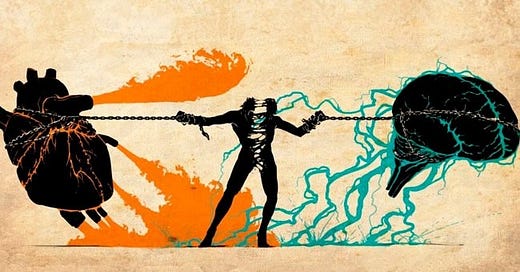“I never made one of my discoveries through the process of rational thinking”
Albert Einstein
Welcome to “Sebastian’s Leadership Reflections”… today Choice Theory! Rational or Irrational, who knows?
Among decision-making theories, Rational Choice Theory (RCT) stands out for its simplicity and profound implications. However, as we peel the layers of this onion, we find that human decision-making is far more intricate than what RCT might suggest.
Let's then try to understand the origins, applications, and the nuances of human choices.
The Origins of Rational Choice Theory
Rational Choice Theory has its roots in classical economic thought. It presents a simple idea: when presented with options, individuals will choose the one that maximizes their personal benefit. In essence, RCT considers that we're all rational actors on the stage of life, making decisions that serve our best interests. RCT theory suggests that individuals, termed as "rational actors," consistently aim to maximize their benefits and minimize losses based on the information they possess.
The economist Adam Smith was pivotal in shaping RCT, particularly through his discussions on self-interest and the "invisible hand" in his seminal work, "An Inquiry into the Nature and Causes of the Wealth of Nations" (1776). While many economists see the principles of RCT as beneficial for understanding economic behaviors, some challenge its accuracy and broader implications.
In economics, RCT is used to predict how consumers will behave. For instance, if two products are identical but one is cheaper, a rational consumer will choose the less expensive option. Similarly, in political science, RCT might be used to predict voting behavior, assuming individuals will vote for the candidate they believe will benefit them the most.
The Reality: Humans Aren't Always Rational
RCT provides a useful framework but real-life decisions are messier.
Emotions Play a Role: Ever made an impulse purchase or a decision in the heat of the moment? Emotions, whether it's excitement, anger, or sadness, can heavily influence our choices.
Limited Information: RCT assumes we have all the information we need to make a decision. In reality, we often make choices with incomplete or imperfect information.
Cognitive Biases: These are systematic patterns of deviation from norm or rationality in judgment. For example, the confirmation bias might lead us to seek out information that confirms our pre-existing beliefs, leading to irrational decisions.
Social Influences: We're social beings, and our decisions are often influenced by peer pressure, societal norms, or the desire to fit in.
Overwhelm and Decision Fatigue: Having too many choices can be overwhelming, leading to either decision paralysis or less rational choices.
Real Life Example
Investments: The stock market often behaves irrationally. Instead of making investment decisions based solely on company performance, many are influenced by market rumors or follow herd behavior.
In one of my early newsletters I covered the topic of Fear and Greed clouding rational judgment. Here the link "Fear and Greed"
Leadership Implications
Understanding that decision-making isn't always rational has profound implications for leaders:
Empathy is Key: Recognize that team members might make decisions based on emotions or personal biases. Being empathetic can help in guiding them towards more rational choices.
Provide Clear Information and Context: To aid rational decision-making, ensure that your team has all the necessary information. Simplify complex data and encourage informed choices. Make sure to provide context, help connect the dots, don’t just feel accomplished because you shared all available information. It will not be enough if you don’t help answer these two important questions:
“What does this mean to us? (team context)
“What’s in it for me?” (personal context)
Encourage Diverse Perspectives: A diverse team can offer multiple viewpoints, helping to counteract individual biases and leading to more rational group decisions.
Training and Awareness: Regular training sessions on cognitive biases and decision-making can help team members recognize their own irrational tendencies and make more informed choices.
In conclusion, while Rational Choice Theory offers a foundational understanding of decision-making, the reality is that we humans are complex beings who get influenced by a myriad of factors that cannot be explained rationally only. Any good leader needs to recognize this complexity and understand how to navigate it effectively. The quality of her decisions will depend on it.
Until our next shared reflection!
P.S. Before I go, here you have “The Treat,” where I share some of the music that kept me company while writing … Enjoy as you bid farewell to this post
“Lead yourself, Learn to live. Lead others, Learn to Build.”
If you enjoyed reading this post consider subscribing to the newsletter for free, joining the community and sharing your thoughts.







